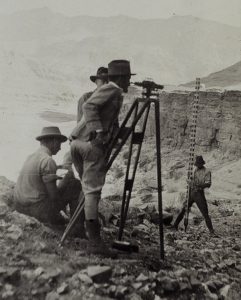FAQ
- Before you purchase it. This will disclose the relationship between the lines of possession and the deeded property lines.
- A lending institution may require either a Land Survey Plat or an Improvement Location Certificate of your property when you borrow money on it.
- Whenever you believe there may be a conflict of use on your property. Prior to dividing a parcel of land for sale.
- The county or city where the property is located may require a Land Survey prior to the construction of any structure or improvements (such as fences) on the property.
- When you intend to sell any tract of land.
- When your attorney, architect, real estate broker or municipal planning or engineering office advise or requires it.
- Review your deed along with other evidence and render a professional opinion as to the locations and any conflicts of the boundaries of your land.
- Set monuments at your property corners and mark them so they can be easily found and identified. Keep an accurate record of all services performed and measurements obtained.
- Identify and advise you of any apparent defect in your land description or evidence of conflict of ownership and/or use.
- Prepare a plat or map of your property indicating boundary measurements, the monuments found and placed, and the calculated area.
- Provide the client with copies of these maps bearing the Professional Land Surveyor's signature and seal. Copies of these maps will also be filed in the County Records where the land is located. This will ensure that the plat or map is available for public inspection.
- Create a property description for all new parcels or any existing parcels that may have a defect.
- Appear in court as an expert witness concerning real property ownership, location or use.
- Assist you in the planning and layout of the Lots, Blocks, Streets, Easements, etc. in a new subdivision.
Did You Know?
Surveying is an ancient profession. It is quite probable that surveying had its origin in ancient Egypt. The Great Pyramid of Khufu at Giza was built about 2700 BCE, 755 feet (230 metres) long and 481 feet (147 metres) high. Its nearly perfect squareness and north–south orientation affirm the ancient Egyptians’ command of surveying. – source

Did You Know?
The Mason Dixon Line is actually a survey line. Charles Mason, an assistant astronomer at Greenwich Observatory, and Jeremiah Dixon, an astronomer, mathematician and surveyor, were hired to survey an agreed-upon line to settle a dispute between Pennsylvania and Maryland. It took 4 years and cost $75,000 to run the 233 mile line. Modern surveys have shown it to be an accurate survey, within a couple of seconds of latitude. – source

